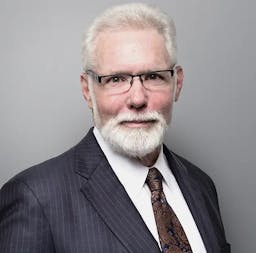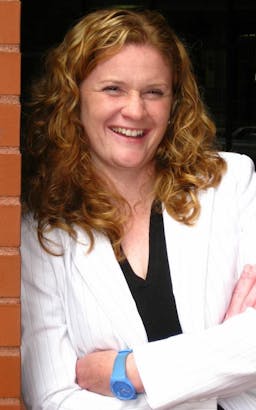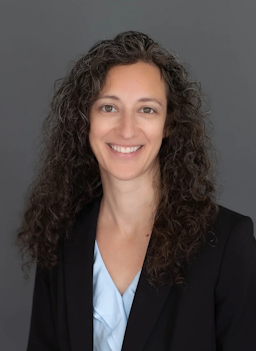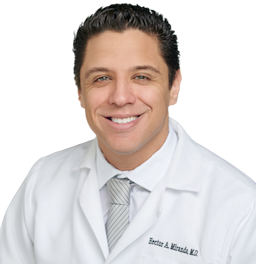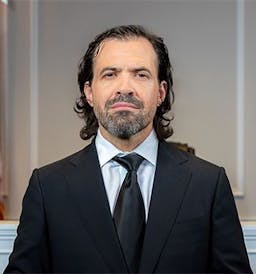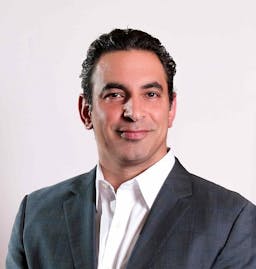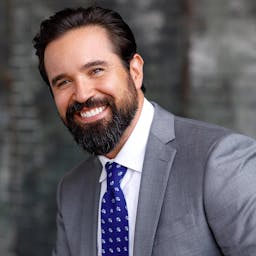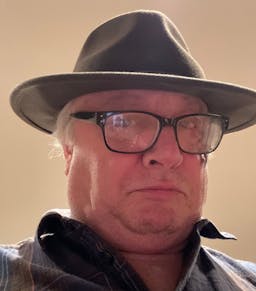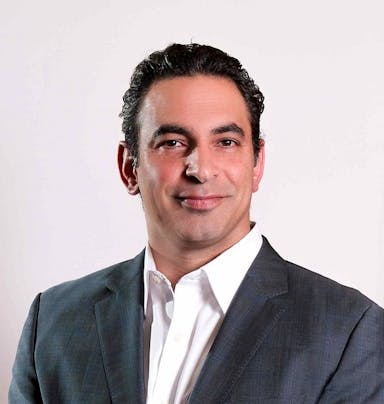deRubertis Employment College
In June 2022, after an eight-week employment retaliation and sexual harassment jury trial involving two former employees of Edison International and Southern California Edison Company, David deRubertis and co-counsel Brennan Kahn secured a combined verdict of $464.5 million dollars.The jury awarded Alfredo Martinez $422.5 million – including $400 million in punitive damages – the largest employment jury verdict in U.S. history and the largest jury verdict in California in 2022 for any kind of case.The jury also awarded Justin Page $42.2 million – believed to the largest male survivor sexual harassment verdict at least in California history.This was not an easy, cherry-picked case.Rather, this landmark verdict was achieved through navigating tremendous obstacles – obstacles that led national employment defense firm Littler and its sophisticated corporate clients to offer no more than a combined $425,000 via statutory offer to compromise.Citing alleged credibility issues with the plaintiffs, claimed bombshell “impeachment” evidence against one of the plaintiffs, and a malingering diagnosis against one of the plaintiffs supported by psychological testing, the defense believed the case was defensible.
In this two-day session, deRubertis will teach and demonstrate the methods he has developed in over two decades of achieving record-setting employment verdicts to try challenging employment cases … not the cherry-picked easy ones but the ones that have warts, obstacles and land mines in them.The core purpose of this session is to show and teach how to win challenging employment cases by telling a story that focuses the jury on the core strengths of the case while accounting for, and dealing with, the obstacles and landmines.The session will cover deRubertis’ general approaches and methods to trying employment cases, and these methods will be illustrated through the specific analysis of the Edison trial. Limited to 25 attendees, the session is intended to be interactive and frequent questions and interactive feedback and discussion.
Attendees will learn topics, methods and techniques such as:
- deRubertis’ views on general principles of trial, persuasion and jury dynamics, and how these general dynamics play out specifically in employment trials and how they can be used to the plaintiff’s advantage in employment trials to overcome the landmines and obstacles and have the jury see the core strengths of the case and the story behind it.
- Winning the “me too” in limine battle.All too often, deRubertis has seen the plaintiff’s bar suffer adverse “me too” rulings that prevent this critical evidence from reaching the jury.Frequently, he attributes these adverse “me too” rulings to plaintiff-side overreaching that lacks a well thought out plan to address the defense claims, and Court’s concerns, about an unduly time-consuming “mini-trial.”The Edison trial involved a protracted “me too” fight at the in limine stage which will be used to illustrate the approach to this key, recurring evidentiary battle.
- Framing the employment case, structuring and sequencing the evidence, plus developing trial theories and themes in employment cases.This will include teaching of deRubertis’ specific methods that he uses to isolate and identify the “kill shots” in the case – i.e., those parts of the story where the defendant did wrong or which the defendant cannot credibly justify – and how to then structure the story around these “kill shots” while still accounting for, and including as an affirmative part of the story, as many of the case’s obstacles, landmines and warts as possible.This will also include a discussion of how to handle those bad facts that cannot be successfully incorporated into the story.Attendees will learn how to synthesize complicated cases with tons of facts, evidence and witnesses to their simplest essence and most understandable story and see how this was done in the Edison.
- Carrying the frame and structure of the case into the evidentiary phase of the trial through sequencing witness order as separate “acts” of the story.This will include a deep discussion of deRubertis’ approach to witness order in employment trials illustrating again through the Edison trial.Attendees will learn how the evidentiary portion of the Edison trial was broken down into a series of separate topical “acts” which matched the structure of the opening statement.
- Starting slow and building the momentum: Mini-opening, jury selection and opening statement.Some believe in advocating their case early, including in jury selection.In deRubertis’ experience, this approach works sometimes, but is dangerous other times and it is not the approach used in the Edison trial which, instead, involved a slow start with a build in momentum.Attendees will see deRubertis’ mini-opening in the Edison trial and learn how the mini-opening set the stage for weeding through over 400 jurors over 5 days of jury selection.The mini-opening and jury selection did not advocate and seek to persuade; they laid out deRubertis’ concerns about the case for the jury to facilitate a vibrant discussion of those concerns identifying jurors who could overcome those concerns.Attendees will learn deRubertis’ goals generally in picking a jury in employment cases, and a specific analysis of the jury selection approach in the Edison case.
- Carefully building credibility in opening: The scene being sent after 5 days of jury selection, after a general discussion of opening statement, attendees will see how the opening statements in the Edison trial were used to start the process of building the credibility of the plaintiff-side and taking down the credibility of the defense.Session will include examples on how to persuade without advocating in opening leading the jurors to the point where they are free to make up their own minds, rather pushing them into the decision.This will include a review of how to structure opening to simplify a complex set of facts to a memorable story.
- Telling the story in your case-in-chief through adverse witnesses and employer documents:Skilled examination of the employer’s adverse witnesses is often one of the most powerful ways to solidify a verdict in employment cases.In virtually every employment trial, the beginning of deRubertis’ case-in-chief is filled with adverse witness examinations who are used to tell the plaintiff’s affirmative story while constantly chipping away at the employer-side’s credibility.Attendees will learn how to use the adverse witnesses to tell your story through focusing on undisputed or indisputable evidence taken from the admitted exhibits or the words of the employer’s own witnesses.This will include a detailed analysis of how to use human resource witnesses and investigation files to tell your story and advance your own themes and theories, and it will show how this was done in the Edison trial.
- Adjusting on the fly and “reading the room.”As part of the story telling through adverse witnesses segment, deRubertis will give examples of how and when to adjust on the fly to meet the directional shifts of momentum during trial.Planning and preparation is critical.But so is responding to and addressing momentum shifts in the courtroom on-the-fly, even if it means departing from the planned course of action.deRubertis will share his thoughts, and give examples, of the importance of reading the room or feeling the vibe in the courtroom so that you know when to change plans to address a momentum shift or potential momentum shift.
- How to discover and tell the client’s true, authentic story without bullshit or embellishment:Employment cases present a challenging dynamic: Often, the employee plaintiff worked for many years, day-in-day-out, side-by-side with people who are now adverse witnesses.The employer’s witnesses likely know tons and tons of information about the plaintiff including specific acts or behavior, personality issues and background information about the plaintiff and their life.This means the employment defense attorney is usually armed with a lot of information about the reality of who the plaintiff really is.As the plaintiff is an important character in the story, if the story we tell does not stay true to who the plaintiff really is, this creates an opportunity for the defense to take shots at our credibility. deRubertis will work through his transformation over the years away from an attorney who tries to make his plaintiff look better than they are to one who discovers the true story behind each client and focuses the case on the aspects of the client and their story that are likely to be viewed as most worthy in the juries eyes.
- Presenting non-economic harm through lay and expert witnesses: Attendees will learn deRubertis’ perspective on how to present non-economic harm in employment cases including through both lay testimony and expert psych testimony. This will include discussion of the pros and cons, and potential pitfalls, of presenting lay testimony. It will also include deRubertis’ specific methods for presenting plaintiff-supportive psych testimony, including the focus on the organic, physical brain harm caused by some prolonged mental health disorders, as well as the methods for examining the adverse psych expert.In the Edison case, a well-known defense psychiatrist aggressively attacked Mr. Page as a dishonest malingerer.This attack found support in the many inconsistencies in key parts of Mr. Page’s testimony and medical records, and it also found support in the psychological testing which even the plaintiffs’ forensic psych agreed showed symptom amplification.In a teaching point applicable to all cases, deRubertis will illustrate how, through embracing the true person his client was and telling his actual authentic story, he was able to put this inconsistencies into context and show that they were not a sign of intentional exaggeration or malingering.
- The defense case-in-chief: The defense case-in-chief in employment cases is often summed up by “more bark than bite.”deRubertis will discuss approaches to handling the defense case-in-chief witnesses including the strategy of targeted cross-examination on only one or two key points and when to forego asking any questions.Through this segment and the segment on sequencing the evidence, attendees will learn how plaintiff’s counsel can largely dictate who is and is not called in the defense’s case-in-chief.
- Elevating the case and making the case for large compensatory damages and a punitive damage finding: deRubertis will teach his specific approach to closing argument when seeking punitive damages.This will include a review of the general structure or starting template for closing argument and a demonstration of portions o the closing focusing on who to elevate the case, argue the key jury instructions and build momentum to a large compensatory damage ask and a plea for the needed findings for punitive damages.
- Pitfalls and tactics for the punitive damage phase: The final segment will address both nuts and bolts of a punitive damage phase (including: securing financial condition evidence; whether to offer any witness testimony; etc.) and then a demo of a portion of the phase-two closing argument in the Edison trial.
TLU Live HB Agenda
Track 1
Breakfast
Hosted by
- 9:00a




 Will Sykes · Dorothy Clay Sims · Sach OliverDepositions
Will Sykes · Dorothy Clay Sims · Sach OliverDepositions Coffee & Snacks
Hosted by
- 10:15a




 Will Sykes · Dorothy Clay Sims · Sach OliverDepositions
Will Sykes · Dorothy Clay Sims · Sach OliverDepositions Coffee & Snacks
Hosted by
- 11:30a




 Will Sykes · Dorothy Clay Sims · Sach OliverDepositions
Will Sykes · Dorothy Clay Sims · Sach OliverDepositions Lunch
Sponsored by
- 2:00p


 Christian Augustin · Sean Claggett Intake and Pre-Lit Workup
Christian Augustin · Sean Claggett Intake and Pre-Lit Workup Coffee & Snacks
Hosted by
- 3:15p





 Shannon Wise · Jennifer Morales · Brian BlankenshipManaging the Case and Putting Constant Pressure on the Defense
Shannon Wise · Jennifer Morales · Brian BlankenshipManaging the Case and Putting Constant Pressure on the Defense Coffee & Snacks
Hosted by
- 4:30p





 Shannon Wise · Jennifer Morales · Brian BlankenshipManaging the Case and Putting Constant Pressure on the Defense
Shannon Wise · Jennifer Morales · Brian BlankenshipManaging the Case and Putting Constant Pressure on the Defense
Track 2
Breakfast
Hosted by
- 9:00a


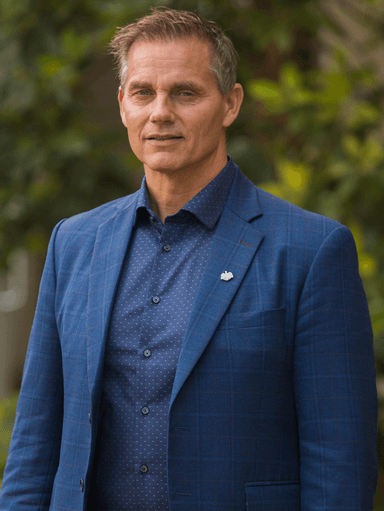 Joseph Fried · Dan Ambrose High Performance Presentations
Joseph Fried · Dan Ambrose High Performance Presentations Coffee & Snacks
Hosted by
- 10:15a


 Haytham Faraj · Ted Wacker Overcoming Significant Hurdles on the way to $21.2 Million Verdict
Haytham Faraj · Ted Wacker Overcoming Significant Hurdles on the way to $21.2 Million Verdict Coffee & Snacks
Hosted by
- 11:30a

 Joseph FriedJoe Fried’s Top Tips for Winning Trucking Case
Joseph FriedJoe Fried’s Top Tips for Winning Trucking Case Lunch
Sponsored by
- 2:00p

 Sagi ShakedMaximizing Your TBI case
Sagi ShakedMaximizing Your TBI case Coffee & Snacks
Hosted by
- 3:15p

 Kurt ZanerHow fun, persuasive writing can lead to eight figure verdicts and settlements
Kurt ZanerHow fun, persuasive writing can lead to eight figure verdicts and settlements Coffee & Snacks
Hosted by
- 4:30p


 Khail Parris · Alex Wheeler Picking a $58,000,000 jury: Using fat words and skinny words for cause
Khail Parris · Alex Wheeler Picking a $58,000,000 jury: Using fat words and skinny words for cause
Track 3
Breakfast
Hosted by
- 9:00a

 Christian MorrisCross-Examination of Defense Medical Expert
Christian MorrisCross-Examination of Defense Medical Expert Coffee & Snacks
Hosted by
- 10:15a


 Bruce Broillet · Molly McKibben The Erin Andrews Invasion of Privacy Case: How the $55 Million non-economic Verdict was won
Bruce Broillet · Molly McKibben The Erin Andrews Invasion of Privacy Case: How the $55 Million non-economic Verdict was won Coffee & Snacks
Hosted by
- 11:30a


 Bruce Broillet · Molly McKibben The Erin Andrews Invasion of Privacy Case: How the $55 Million non-economic Verdict was won
Bruce Broillet · Molly McKibben The Erin Andrews Invasion of Privacy Case: How the $55 Million non-economic Verdict was won Lunch
Sponsored by
- 2:00p


 Bruce Broillet · Molly McKibben The Erin Andrews Invasion of Privacy Case: How the $55 Million non-economic Verdict was won
Bruce Broillet · Molly McKibben The Erin Andrews Invasion of Privacy Case: How the $55 Million non-economic Verdict was won Coffee & Snacks
Hosted by
- 3:15p

 Przemek LubeckiThe Mental Game for Trial - Performing Under Pressure
Przemek LubeckiThe Mental Game for Trial - Performing Under Pressure Coffee & Snacks
Hosted by
- 4:30p

 Alicia CampbellHow to Get Your First 8 Figure Verdict
Alicia CampbellHow to Get Your First 8 Figure Verdict
Track 4
Breakfast
Hosted by
- 9:00a



 Phillip Miller · Justin Kahn · Edward CiarimboliDesigning Exhibits - Design Ideas and Techniques
Phillip Miller · Justin Kahn · Edward CiarimboliDesigning Exhibits - Design Ideas and Techniques Coffee & Snacks
Hosted by
- 10:15a



 Phillip Miller · Justin Kahn · Edward CiarimboliDesigning Exhibits - Design Ideas and Techniques
Phillip Miller · Justin Kahn · Edward CiarimboliDesigning Exhibits - Design Ideas and Techniques Coffee & Snacks
Hosted by
- 11:30a



 Phillip Miller · Justin Kahn · Edward CiarimboliDesigning Exhibits - Design Ideas and Techniques
Phillip Miller · Justin Kahn · Edward CiarimboliDesigning Exhibits - Design Ideas and Techniques Lunch
Sponsored by
- 2:00p





 Lloyd Bell · Monte Tynes · Bob ByrneTry your FRKN Case
Lloyd Bell · Monte Tynes · Bob ByrneTry your FRKN Case Coffee & Snacks
Hosted by
- 3:15p

 John RomanoNavigating The Minefields Of Valuing Cases
John RomanoNavigating The Minefields Of Valuing Cases Coffee & Snacks
Hosted by
- 4:30p

 Dirk VandeverDirk's Trial Manifesto
Dirk VandeverDirk's Trial Manifesto
Party Sponsor
5:30pm-8:30pm
Barbie Pink & White Party
Hosted by














